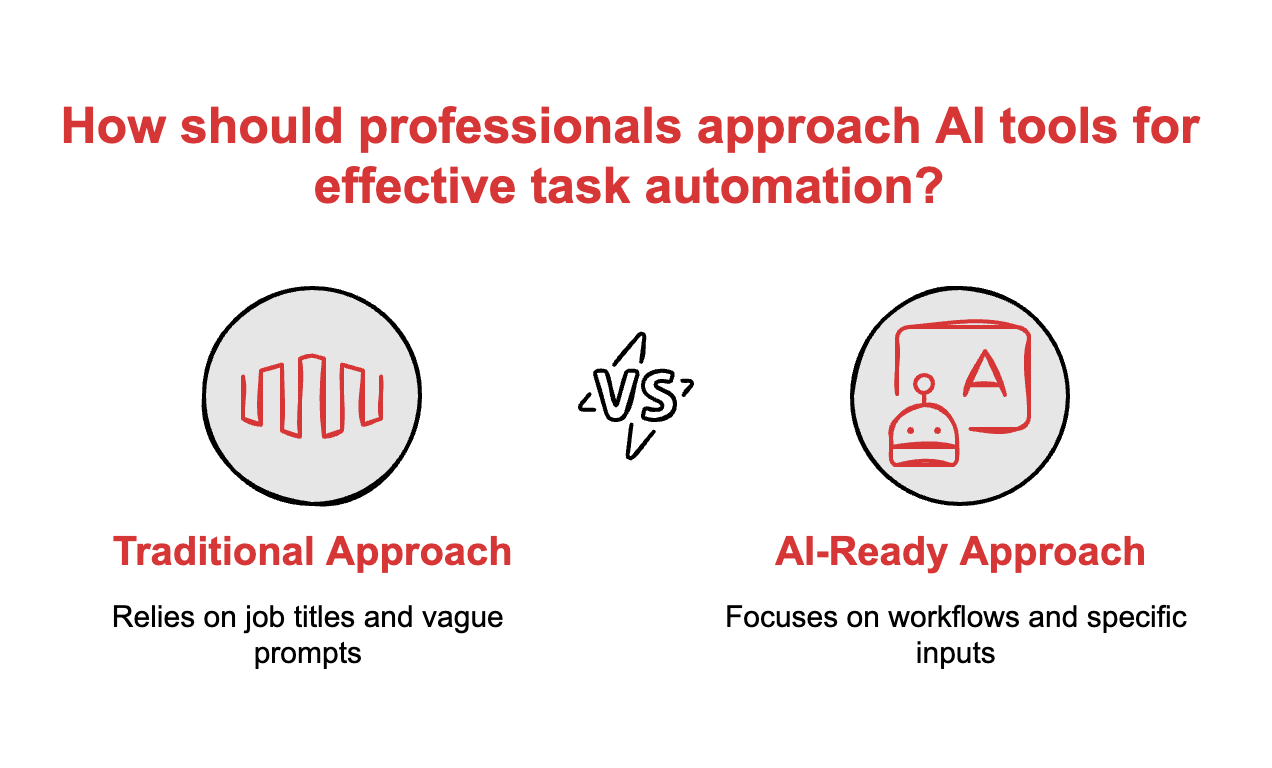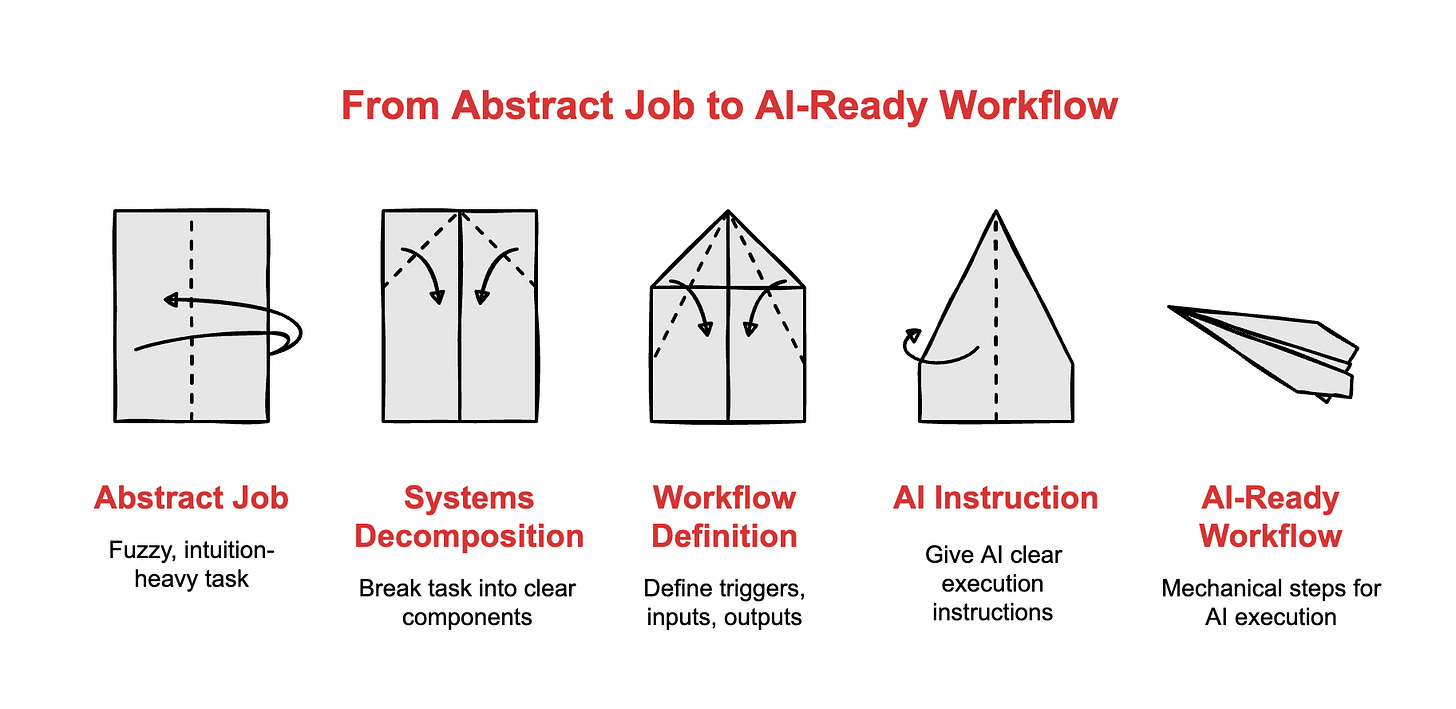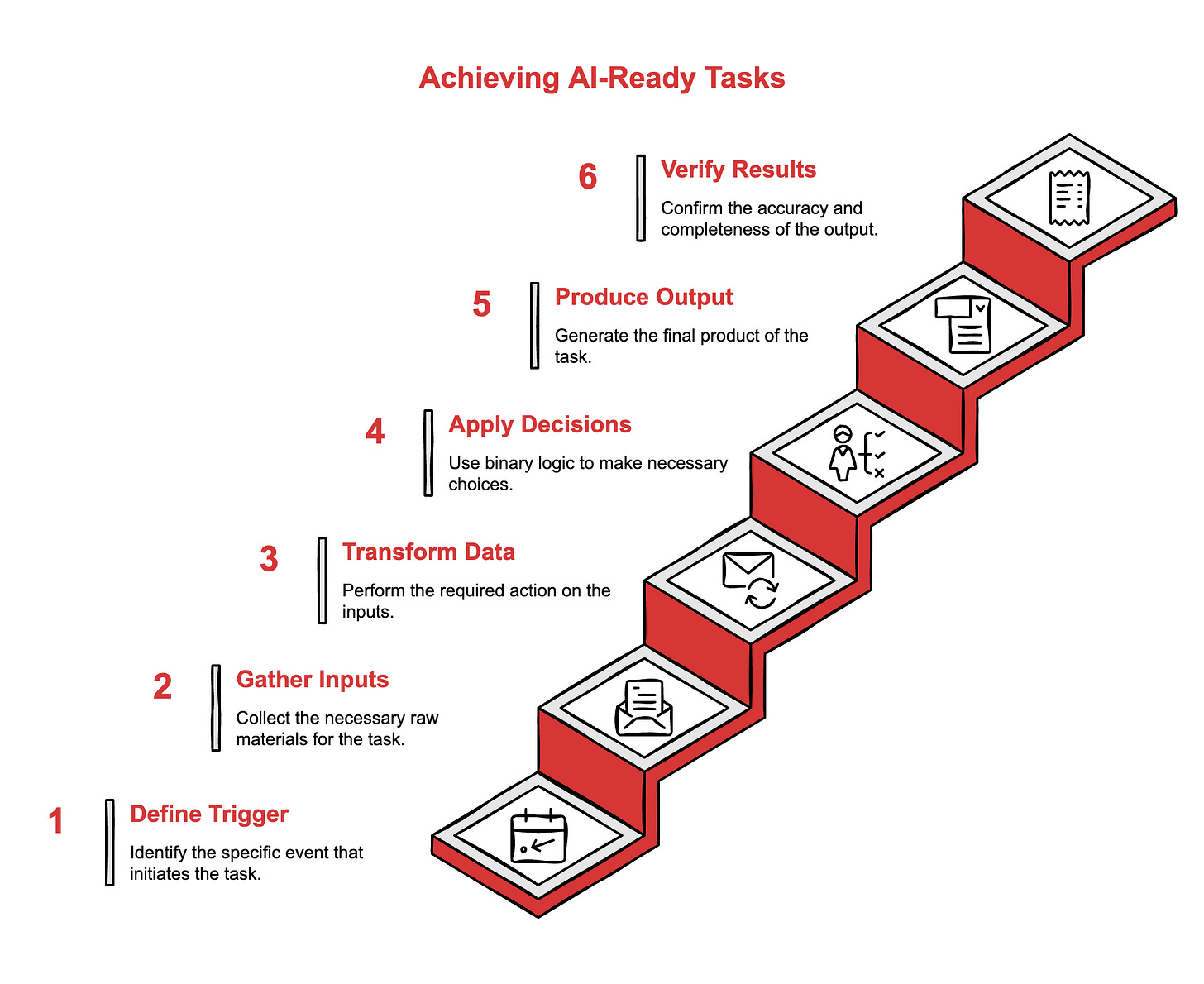Your job title means nothing to AI
The skill that separates people who use AI from people who delegate to it
Hey Adopter,
Tell ChatGPT you’re a project manager and ask it to do your job. Watch what happens.
Generic corporate fluff. Meaningless bullet points. A response so vague it could apply to anyone, anywhere, doing anything.
The tool didn’t fail you. You failed to speak its language.
“Project Manager” is a label humans invented for org charts and LinkedIn profiles. It tells an AI nothing about what you actually do. No triggers. No inputs. No decision logic. Just a fuzzy cloud of assumed competence.
The professionals pulling ahead right now aren’t better at prompting. They’ve learned something more fundamental: how to see their own work the way a machine needs to see it.
Stop thinking in titles, start thinking in workflows
Your job is not a title. It’s a stack of repeatable actions, each with specific triggers, inputs, and outputs.
That weekly status report? A workflow. Client follow-ups? A workflow. Expense approvals, meeting prep, data pulls, that thing you do every Monday morning while half-asleep? All workflows.
The moment you can see your role as a collection of mechanical steps rather than a single abstract responsibility, you unlock something powerful. You stop asking AI to “help with your job” and start giving it instructions it can actually execute.
This is systems decomposition. The ability to take a fuzzy, intuition-heavy task and break it into components clear enough for an agent to run without you.
Six questions that make any task AI-ready
Every workflow you want to hand off needs six defined pieces:
Trigger , what specifically starts this task? An email landing in a folder. A calendar reminder. A Slack message from a specific person. Not “when needed” or “as things come up.” A concrete event.
Inputs , what raw material does the agent need to work with? The email body. An attached PDF. A row in a spreadsheet. The contents of a web page. Name the exact sources.
Transformation , what is the specific action? Summarize. Extract. Compare. Translate. Categorize. One verb that describes what happens to the inputs.
Decisions , what are the hard rules? If the budget exceeds a threshold, do one thing. If it doesn’t, do another. No “use your judgment.” Binary logic only.
Output , what gets produced? A draft email. A JSON file. A calendar invite. A filled template. Something concrete and verifiable.
Check , how do you confirm it worked? Does the extracted number match the invoice? Does the summary capture the key points? What does “correct” look like?
Miss any of these and you’re back to vague prompts and disappointing results.
What this looks like in practice
Take a task most professionals handle: responding to inbound leads.
The way you’d describe it to your boss: “I review incoming leads to see if they’re a good fit, do a little research on the company, and then send a personalized reply to get a meeting on the books.”
Sounds reasonable. Completely useless to an AI. It implies intuition, judgment calls, and years of pattern recognition you can’t articulate.
Here’s the same task decomposed:
Trigger , an email arrives in the Inbound folder with “Inquiry” in the subject line.
Inputs , the email body and the sender’s domain.
Transformation , extract the sender name and company name, then browse LinkedIn or the company website to find company size and industry.
Decisions , if company size exceeds 50 employees and the industry is tech, categorize as high priority. If company size is below 50, categorize as nurture.
Output , for high priority leads, draft an email using the VIP template with the company name inserted and three meeting times from my calendar. For nurture leads, draft an email using the standard brochure template.
Check , place the draft in my Drafts folder. Do not send. I review the tone and press send myself.
Same work. Completely different framing. One version assumes the person reading it shares your context. The other gives explicit instructions any system can follow.
You’re not automating yourself out of a job
Notice what you just did in that example…
You didn’t hand over your role. You became the architect.
You decided the threshold. Fifty employees, not thirty, not a hundred. That’s strategic judgment based on your experience with what converts.
You created the templates. The AI fills in blanks. The voice, the positioning, the offer structure that came from you.
You kept the final check. Drafts, not sent messages. You stay in the loop for anything that matters.
This is the shift happening right now. The people who decompose their workflows become managers of systems. The people who cling to job titles become the ones those systems eventually replace.
Your one task this week
Don’t try to automate everything. Pick a single annoying, repetitive workflow. Weekly status updates. Expense categorization. Meeting summaries. Something you do often enough that the friction adds up.
Open a blank document. Force yourself through the six questions for that one task. Write out the trigger, the inputs, the transformation, the decision logic, the output, and the check.
When you can see all six clearly, you’ve done something most professionals never will. You’ve translated your expertise into a format that scales beyond your own hands.
That’s not losing your job. That’s proving you understand it well enough to teach a machine.
Adapt & Create,
Kamil






